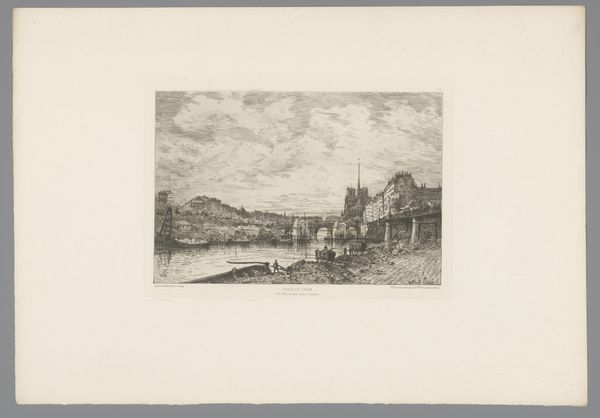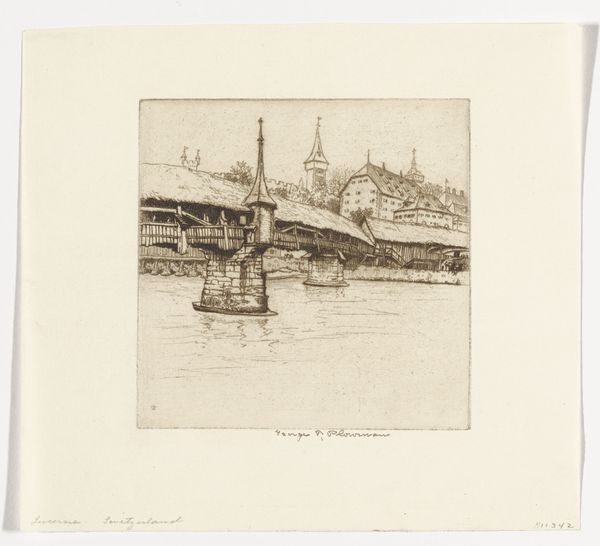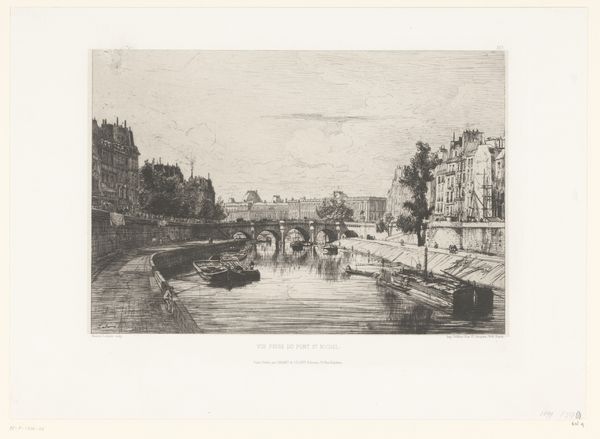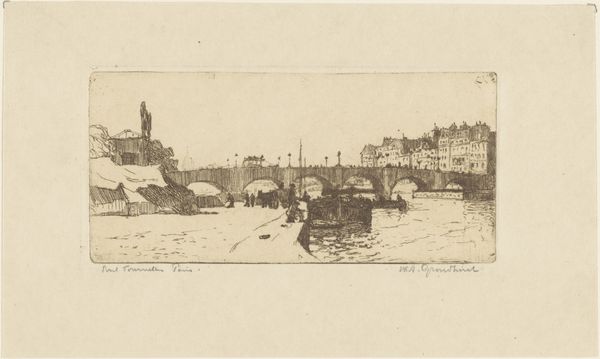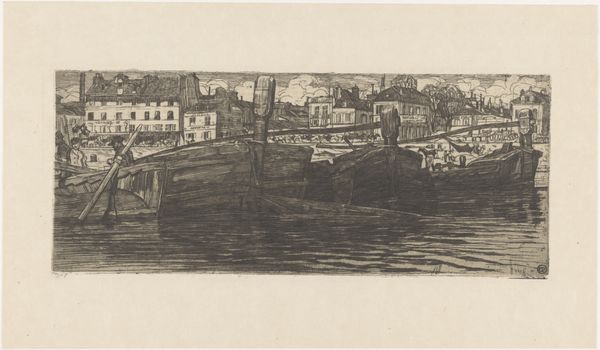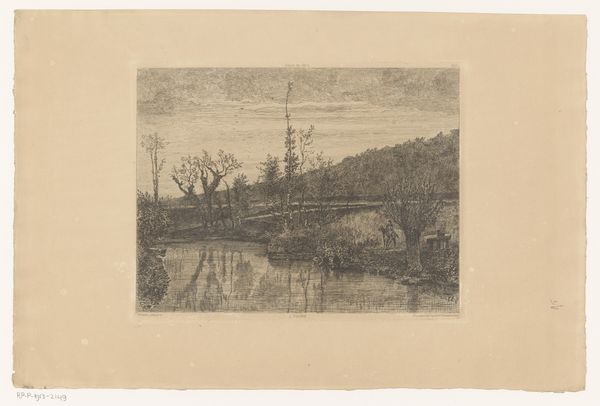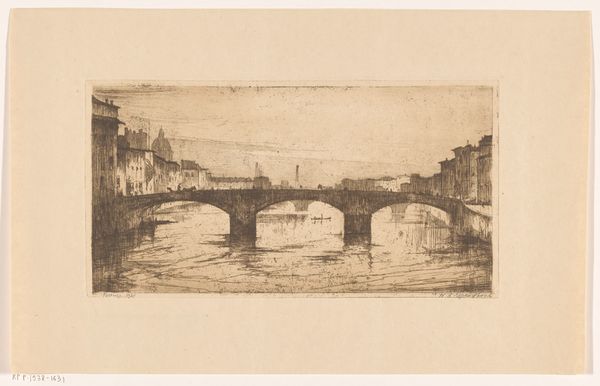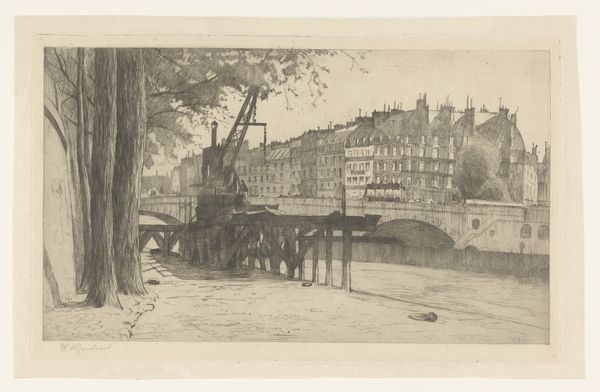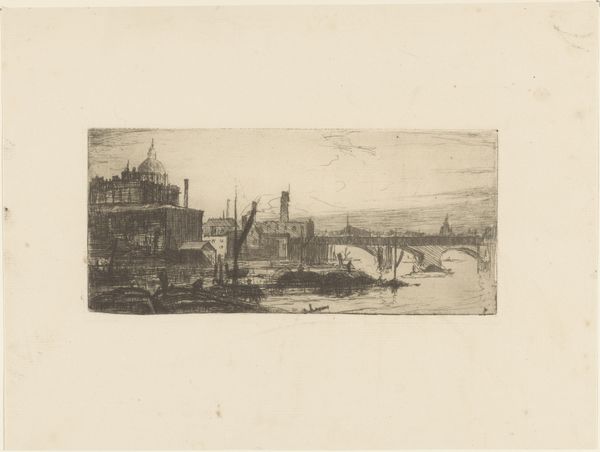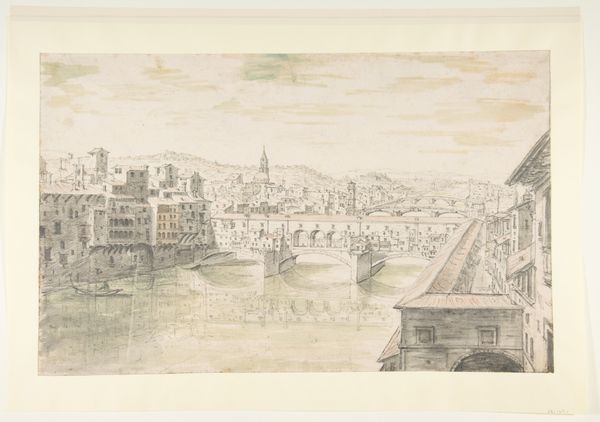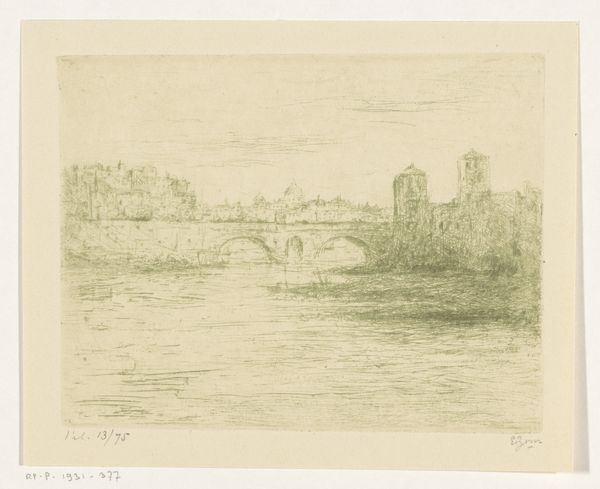
print, etching
# print
#
etching
#
landscape
#
etching
#
cityscape
Dimensions: height 100 mm, width 158 mm
Copyright: Rijks Museum: Open Domain
This is Willem Adrianus Grondhout’s etching of a bridge over the Seine in Paris. Etching is an indirect process, which uses acid to bite into a metal plate. The etcher covers the plate with a waxy ground and then draws an image with a sharp needle, exposing the metal. The plate is then submerged in acid, which eats away the lines where the metal has been exposed. The longer the plate sits in the acid, the deeper the lines become. Once the ground is removed, the plate is inked and then pressed onto paper. Here, Grondhout’s manipulation of the etched line is key to the image: its fineness gives a delicate atmospheric effect that softens the monumental architecture of Paris. This process allowed for the relatively quick and efficient reproduction of images, meeting a growing demand for visual representations of city life during the modern era. The artist has thus given us not just an image of Paris, but a portrait of its industrialized visual culture.
Comments
No comments
Be the first to comment and join the conversation on the ultimate creative platform.
